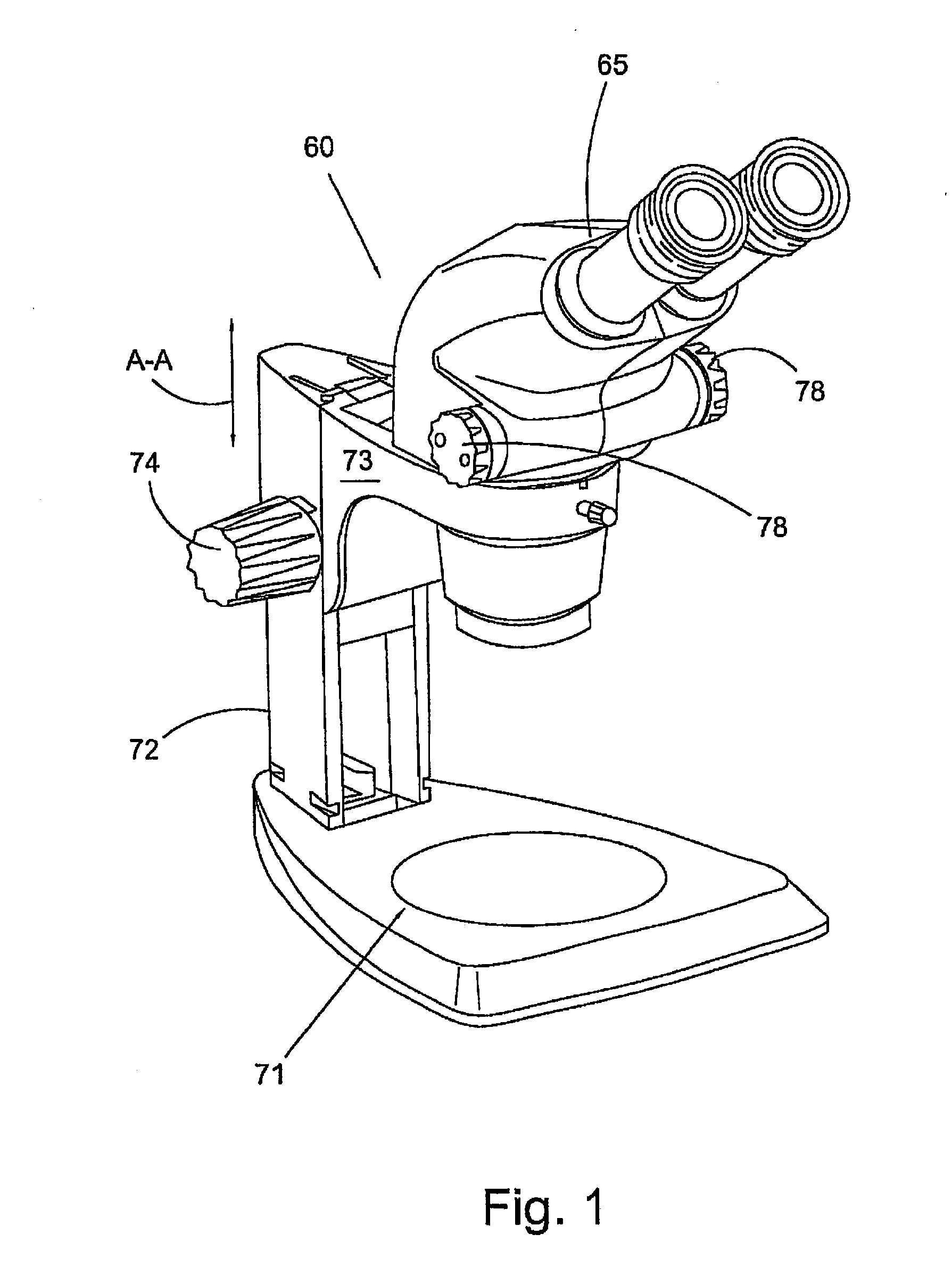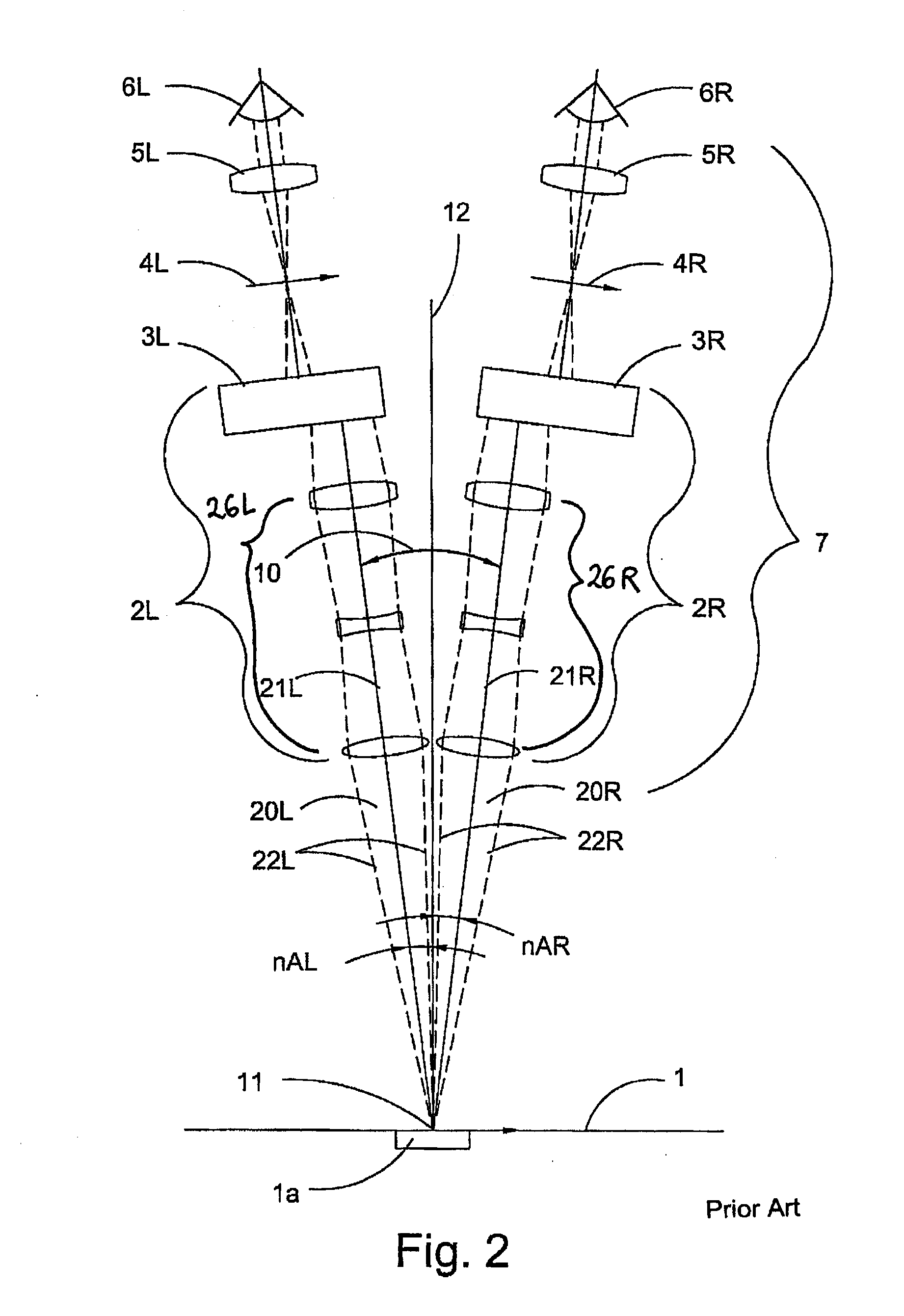Greenough-type stereomicroscope
a stereomicroscope and greenough technology, applied in the field of greenough stereomicroscopes, can solve the problems of limited stereoscopic viewing, high depth of focus, and difficulty in merging two partial images into a three-dimensional image, and achieve the effect of improving detail recognition and increasing the convergence angl
- Summary
- Abstract
- Description
- Claims
- Application Information
AI Technical Summary
Benefits of technology
Problems solved by technology
Method used
Image
Examples
Embodiment Construction
[0040]FIG. 1 is a perspective view of a Greenough-style stereomicroscope 60 according to the prior art. The stereomicroscope 60 comprises a base 71, to which a focusing column 72 is secured. A focusing arm 73 is movably mounted on the focusing column 72, and can be displaced by means of adjustment elements 74 along the double arrow A-A. The stereomicroscope 60 has a binocular tube 65 and a zoom system (see FIG. 2). The zoom system can be adjusted by adjusting elements 78. Instead of a continuously operating zoom system an objective changer which discretely changes the magnification may be provided.
[0041]FIG. 2 is a schematic diagram of the optical design of a Greenough-style stereomicroscope 7 according to the prior art. The Greenough-style stereomicroscope 7 is constructed from a first monocular microscope 2R and a second monocular microscope 2L. The two microscopes 2R and 2L are constructed symmetrically in such a way that both microscopes 2R and 2L have the same focal point 11. ...
PUM
 Login to View More
Login to View More Abstract
Description
Claims
Application Information
 Login to View More
Login to View More - R&D
- Intellectual Property
- Life Sciences
- Materials
- Tech Scout
- Unparalleled Data Quality
- Higher Quality Content
- 60% Fewer Hallucinations
Browse by: Latest US Patents, China's latest patents, Technical Efficacy Thesaurus, Application Domain, Technology Topic, Popular Technical Reports.
© 2025 PatSnap. All rights reserved.Legal|Privacy policy|Modern Slavery Act Transparency Statement|Sitemap|About US| Contact US: help@patsnap.com



